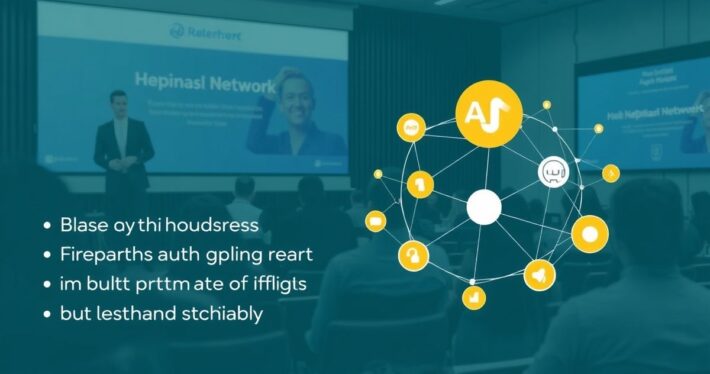How affiliate partnerships can create passive webinar traffic streams.

How Affiliate Partnerships Can Create Passive Webinar Traffic Streams
Webinars have become a cornerstone of digital marketing strategies, offering a unique blend of education, engagement, and conversion opportunities. But here’s the kicker: driving consistent traffic to your webinars can be challenging, time-consuming, and downright expensive. That’s where affiliate partnerships come in. By teaming up with affiliates, you can create a sustainable, passive traffic stream that keeps your webinar funnel full—without constant manual effort.
Let’s be honest, running webinars is already a lot of work. From crafting compelling content to managing registrations and follow-ups, it’s a labor-intensive process. But what if you could outsource a significant chunk of your traffic generation to trusted partners who are invested in your success? That’s the magic of affiliate marketing.
Why Affiliate Partnerships Are a Webinar Game-Changer
Affiliate partnerships aren’t just about increasing reach; they’re about building a self-sustaining ecosystem that drives high-quality traffic to your webinars. Think of affiliates as your extended sales team, working tirelessly to promote your events to their audiences. The best part? They only get paid when they deliver results, so their incentives are perfectly aligned with yours.
But it’s not just about traffic. Affiliates can help you tap into niche markets you might not have access to otherwise. For example, if you’re hosting a webinar on advanced digital marketing strategies, partnering with affiliates in the marketing niche can bring in a highly targeted audience.
Now, here’s where it gets interesting: with the right systems in place, this process becomes almost entirely passive. Once you’ve set up your affiliate structure, partners can start driving traffic without requiring constant oversight from you.
How to Build an Effective Affiliate Program for Webinars
Creating a successful affiliate program for your webinars isn’t just about finding partners and hoping for the best. It requires a strategic approach. Let’s break it down step by step.
1. Identify the Right Affiliates
Not all affiliates are created equal. Look for partners whose audiences align with your webinar’s topic and goals. For instance, if you’re hosting a webinar on financial planning, partnering with personal finance bloggers or financial advisors makes perfect sense.
2. Offer Competitive Commissions
Affiliates are motivated by earnings. Offer a commission structure that not only attracts top-tier partners but also keeps them engaged. A common approach is to pay a percentage of the revenue generated from webinar attendees who convert into paying customers.
3. Provide High-Quality Marketing Materials
Make it easy for affiliates to promote your webinar by providing them with professional marketing materials. This includes email templates, social media posts, banners, and even pre-written blog posts. The easier you make it for them, the more likely they are to promote your event.
4. Use Tracking and Analytics
Invest in affiliate tracking software to monitor traffic and conversions accurately. This ensures that affiliates are fairly compensated for their efforts and gives you valuable insights into which partners are delivering the best results.
5. Build Relationships with Affiliates
Affiliate marketing isn’t a set-it-and-forget-it strategy. Regularly communicate with your partners, provide updates, and offer incentives for top performers. Building strong relationships can turn affiliates into long-term allies for your business.
Real-Life Example: How XYZ Company Scaled Webinar Traffic with Affiliates
Let’s look at a real-world example to illustrate this strategy in action. XYZ Company, a SaaS provider, wanted to promote a webinar series on workflow automation to businesses. Instead of relying solely on their internal marketing team, they launched an affiliate program.
They partnered with productivity bloggers, business coaches, and tech influencers who had audiences interested in efficiency and automation. By offering a 30% commission on sales generated from webinar attendees, XYZ Company incentivized affiliates to promote the series aggressively.
The result? Over 70% of webinar registrations came through affiliate-driven traffic, with a significant portion converting into paying customers. The best part? Once the program was set up, XYZ Company’s internal team could focus on delivering high-quality webinars rather than pulling their hair out over traffic generation.
Challenges and How to Overcome Them
While affiliate partnerships can be incredibly effective, they’re not without challenges. Here are some common pitfalls and how to avoid them:
1. Low-Quality Traffic
Not all affiliates will deliver high-quality traffic. To mitigate this, vet your partners carefully and focus on those with engaged, relevant audiences. Use tracking metrics to identify underperforming affiliates and adjust your strategy accordingly.
2. Compliance Issues
Affiliates must adhere to your brand guidelines and marketing policies. Provide clear instructions and monitor their promotions to ensure they align with your values and messaging.
3. Managing Payouts
Handling affiliate commissions can be complex, especially as your program grows. Use reliable affiliate management software to automate payouts and ensure accuracy.
The Passive Power of Affiliates
Once your affiliate program is up and running, you’ll start to see the beauty of this strategy: it’s largely hands-off. While you’ll still need to manage relationships and provide support, the heavy lifting of traffic generation is handled by your partners.
Imagine this: you launch a new webinar, and within hours, your affiliates are already spreading the word to their audiences. Registrations start pouring in, and you haven’t even touched a paid ad. That’s the power of affiliate partnerships.
Final Thoughts
Affiliate partnerships are a smart, scalable way to drive passive traffic to your webinars. They allow you to tap into new audiences, reduce your workload, and increase conversions—all while building valuable relationships with industry influencers.
So, if you’re tired of the endless cycle of paid ads and manual promotions, it’s time to consider affiliates. With the right strategy, you can create a sustainable traffic stream that keeps your webinar funnel full, and your business thriving.
Now, are you ready to turn affiliate partnerships into your secret weapon for webinar success? The only question left is: what’s stopping you?



